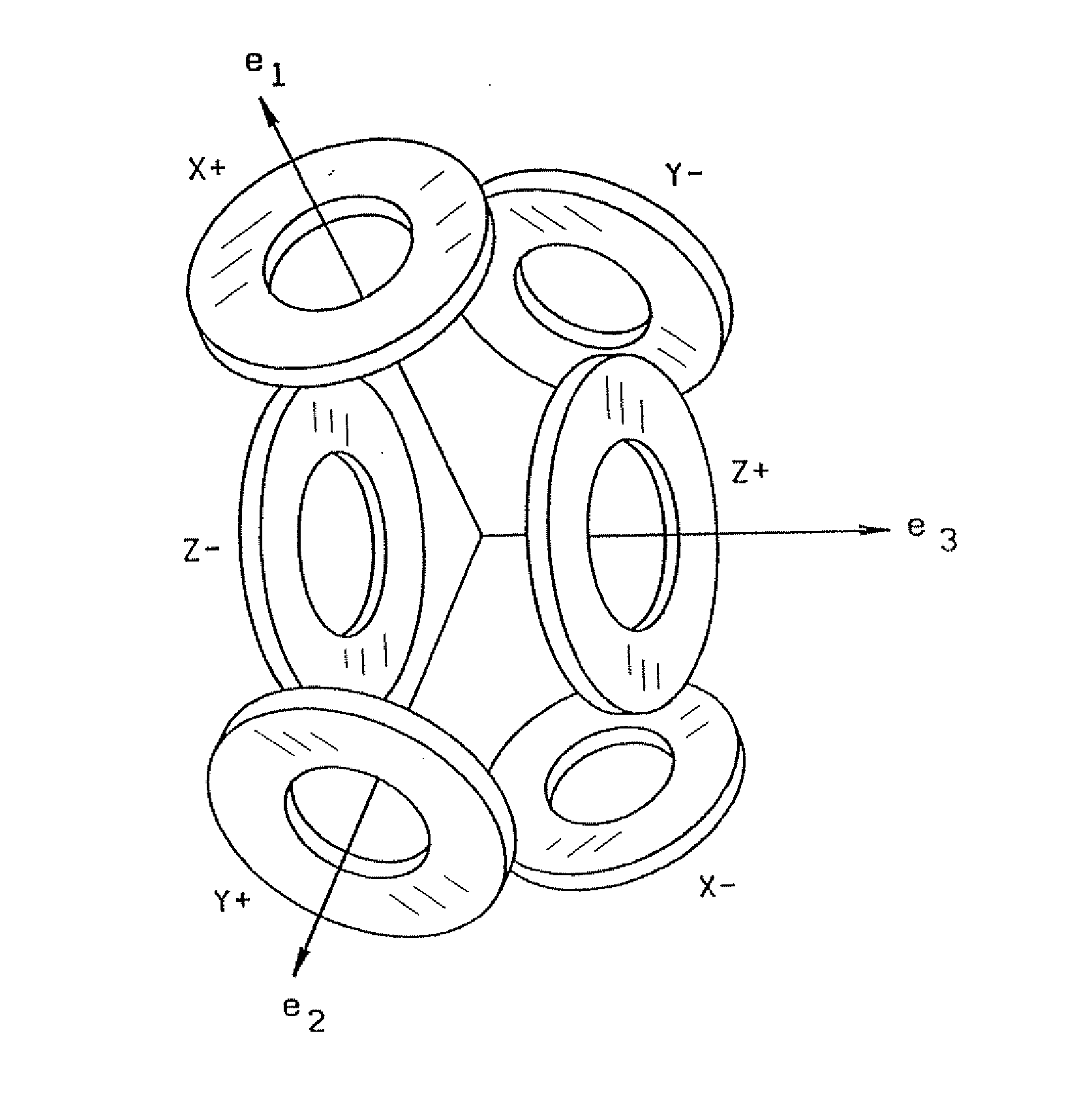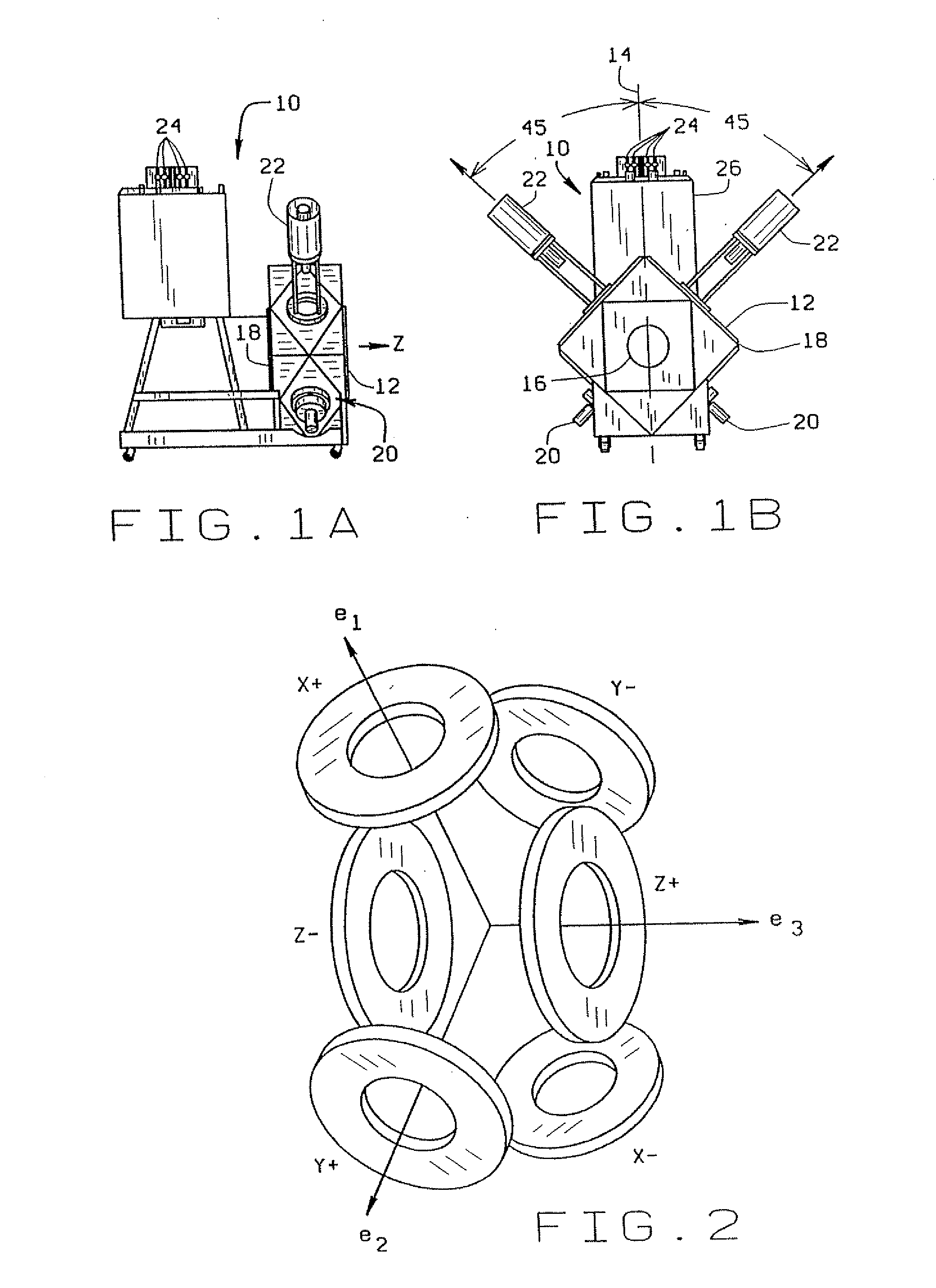Method and apparatus for magnetically controlling motion direction of mechanically pushed catheter
a technology of magnetic control and motion direction, which is applied in the direction of catheters, applications, diagnostic recording/measuring, etc., can solve the problems of less suitable arrangement for moving implants, difficulty in finding a set of currents to accomplish a move step, and inability to find undesired magnetic forces on implants, etc., to achieve reliable, predictable strength, and control the motion of catheters quickly, accurately and reliably
- Summary
- Abstract
- Description
- Claims
- Application Information
AI Technical Summary
Benefits of technology
Problems solved by technology
Method used
Image
Examples
Embodiment Construction
[0040]The invention is described herein in the context of guiding an implant inside a brain because tests have been performed for this case. However, those skilled in the art will recognize that the invention is applicable to other parts of the body and to other media through which a magnetic tip at the end of a flexible catheter can be pushed.
[0041]In the present example, a system of six coils is provided. Referring to FIG. 2, which is a simplified representation of the coil geometry, the coils X+, X−, Y+, Y−, Z+, and Z− are operated in unbalanced pairs (X+, X−), (Y+, Y−), (Z+, Z−) acting approximately as three vectors X, Y, and Z having mutually perpendicular directions, but different magnitudes. The operation is achieved in a manner that is effective at positions off the axis of any or all of the three pairs of coils (X+, X−), (Y+, Y−), (Z+, Z−) constituting the helmet (or other coil support arrangement).
[0042]The method for controlling the path in the Magnetic Stereotaxis System...
PUM
 Login to View More
Login to View More Abstract
Description
Claims
Application Information
 Login to View More
Login to View More - R&D
- Intellectual Property
- Life Sciences
- Materials
- Tech Scout
- Unparalleled Data Quality
- Higher Quality Content
- 60% Fewer Hallucinations
Browse by: Latest US Patents, China's latest patents, Technical Efficacy Thesaurus, Application Domain, Technology Topic, Popular Technical Reports.
© 2025 PatSnap. All rights reserved.Legal|Privacy policy|Modern Slavery Act Transparency Statement|Sitemap|About US| Contact US: help@patsnap.com



